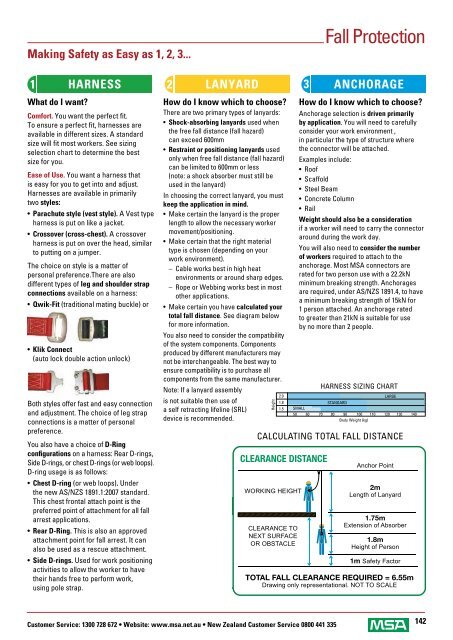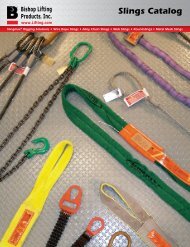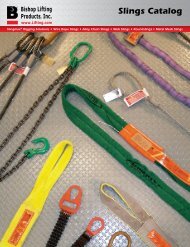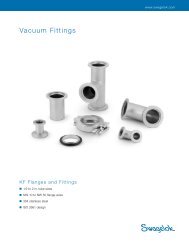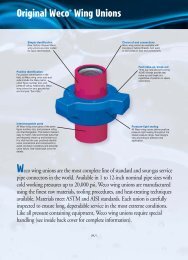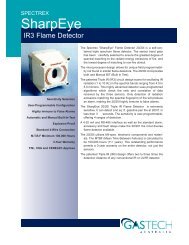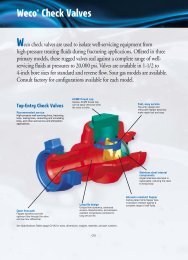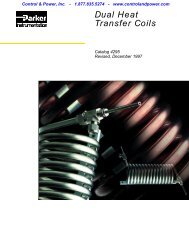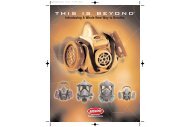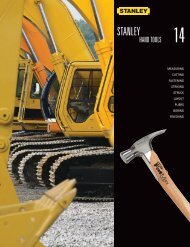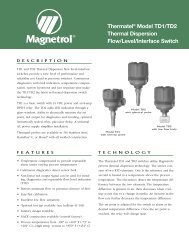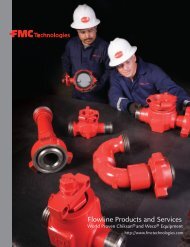SAFETY EQUIPMENT CATALOGUE - Eoss.com
SAFETY EQUIPMENT CATALOGUE - Eoss.com
SAFETY EQUIPMENT CATALOGUE - Eoss.com
- No tags were found...
Create successful ePaper yourself
Turn your PDF publications into a flip-book with our unique Google optimized e-Paper software.
Customer Service: 1300 728 672 • Website: www.msa.net.au • New Zealand Customer Service 0800 441 335 142SUSPENSION TRAUMATHE MAJOR REASON FOR THE IMPORTANCE OF EFFECTING A QUICK RESCUE RESPONSEMaking Safety as Easy as 1, 2, 3...Fall Protection1 HARNESS 2 LANYARD 3What do I want?Comfort. You want the perfect fit.To ensure a perfect fit, harnesses areavailable in different sizes. A standardsize will fit most workers. See sizingselection chart to determine the bestsize for you.Ease of Use. You want a harness thatis easy for you to get into and adjust.Harnesses are available in primarilytwo styles:• Parachute style (vest style). A Vest typeharness is put on like a jacket.• Crossover (cross-chest). A crossoverharness is put on over the head, similarto putting on a jumper.The choice on style is a matter ofpersonal preference.There are alsodifferent types of leg and shoulder strapconnections available on a harness:• Qwik-Fit (traditional mating buckle) or• Klik Connect(auto lock double action unlock) Both styles offer fast and easy connectionand adjustment. The choice of leg strapconnections is a matter of personalpreference. FACTORS TO CONSIDERYou also have a choice of D-Ringconfigurations Anchorage on a harness: (Min.15Kn) Rear D-rings,Full Body HarnessSide D-rings, or chest D-rings (or web loops).D-ring usage is Rescue as follows: Plan• Chest D-ring Clearance (or web loops). Distance Under (see chart)the new AS/NZS 1891.1:2007 standard.This chest frontal attach point is thepreferred pointRESCUEof attachmentMETHODSfor all fallarrest applications.• Rear D-Ring. This is also an approvedattachment point for fall arrest. It canalso be used as a rescue attachment.• Side D-rings. Used for work positioningHow do I know which to choose?There are two primary types of lanyards:SOLUTIONS FOR <strong>SAFETY</strong> AT HEIGHTSTYPICAL FALL SITUATION AND RESCUEConnection Means (Shock Absorbing Lanyard or SRL)• Shock-absorbing lanyards used whenthe free fall distance (fall hazard)can exceed 600mm• Restraint or positioning lanyards usedonly when free fall distance (fall hazard)can be limited to 600mm or less(note: a shock absorber must still beused in the lanyard)In choosing the correct lanyard, you mustkeep the application in mind.• Make certain the lanyard is the properlength to allow the necessary workermovement/positioning.• Make certain that the right materialtype is chosen (depending on yourwork environment).– Cable works best in high heatenvironments or around sharp edges.– Rope or Webbing works best in mostother applications.• Make certain you have calculated yourtotal fall distance. See diagram belowfor more information.You also need to consider the <strong>com</strong>patibilityof the system <strong>com</strong>ponents. Componentsproduced by different manufacturers maynot be interchangeable. The best way toensure <strong>com</strong>patibility is to purchase all<strong>com</strong>ponents from the same manufacturer.Note: If a lanyard assembly2.0is not suitable then use of1.8a self retracting lifeline (SRL)device is re<strong>com</strong>mended.Using the unique MSA Rescue Pole Kit, Rescue SafeRetrieval System or The Skylotec Milan rescue devices,allows a rescue to be carried out without putting arescuer in danger by requiring them to climb down to thefallen worker, these rescue devices allow a rescue to beperformed within 5 to 10 minutes with a regular trainingactivities to sessions allow the on the worker techniques. to havetheir hands free to perform work,using pole strap.HeightANCHORAGEHow do I know which to choose?Anchorage selection is driven primarilyby application. You will need to carefullyconsider your work environment ,in particular the type of structure wherethe connector will be attached.Examples include:• Roof• Scaffold• Steel Beam• Concrete Column• RailWeight should also be a considerationif a worker will need to carry the connectoraround during the work day.You will also need to consider the numberof workers required to attach to theanchorage. Most MSA connectors arerated for two person use with a 22.2kNminimum breaking strength. Anchoragesare required, under AS/NZS 1891.4, to havea minimum breaking strength of 15kN for1 person attached. An anchorage ratedto greater than 21kN is suitable for useby no more than 2 people.Harness Sizing ChartLARGESTANDARD1.5 SMALL50 60 70 80 90 100 110 120 130 140Body Weight (kg)CALCULATING TOTAL FALL DISTANCECLEARANCE DISTANCEWORKING HEIGHTCLEARANCE TONEXT SURFACEOR OBSTACLEAnchor Point2mLength of Lanyard1.75mExtension of Absorber1.8mHeight of Person1m Safety FactorTOTAL FALL CLEARANCE REQUIRED = 6.55mDrawing only representational. NOT TO SCALE


